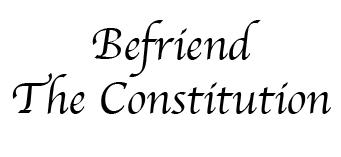What are checks and balances and how do they work?
As we learned in the answer to a previous question, the Constitution of the United States creates a government with three branches. Those branches are the legislative, the executive, and the judicial. The legislative branch is the Congress. The executive branch is the President and those who work under him. The judicial branch is the Supreme Court and the other federal courts.
The Founders understood human nature. They knew that those in power try to gain more power. They knew that each branch of government would try make itself more powerful by taking power from the other branches. They knew that each branch would try to assume new powers not granted to them by the Constitution. To prevent this they created a system that allowed the different branches to control each other. This system is called “Checks and Balances”. The system helps maintain the proper balance of power between the branches of the federal government, the states, and the people. It does so by allowing the different groups to check the acts of the others.
Bills that are passed by the Congress must be signed by the President to become law. The President can veto (refuse to sign) a bill he disagrees with. This is an important check on the power of Congress given to the President. After the President vetoes a bill, the Congress can override the veto by passing the bill a second time with at least a 2/3 majority in each body. This gives Congress a check on the power of a President who might try to veto important bills.
The Senate must approve the people the President chooses to serve in the executive branch. The Congress can remove any person in the executive branch from office for misbehavior. The Congress also has the power to remove the President himself from office should it become necessary. All treaties made by the President must be approved by the Senate. These powers give Congress some control over the executive branch.
Judges who serve in the federal courts are chosen by the President. This gives the executive branch some control over the courts. The judges chosen by the President to serve in the courts must be approved by the Senate. This gives the Senate a measure of control over both the President and the courts. The Congress also has power to remove misbehaving judges and to limit the types of cases that can be heard by the Supreme Court. This gives Congress further power to control the courts.
The Constitution does not give any branch the authority to assume the responsibilities of the others, nor does it give any branch the authority to delegate its responsibilities to the others. This acts as an important check on the power of all three branches.
These are the basic checks and balances the Founders placed in the Constitution. They help prevent any branch of the government from becoming too powerful.
Published March 5, 2017



